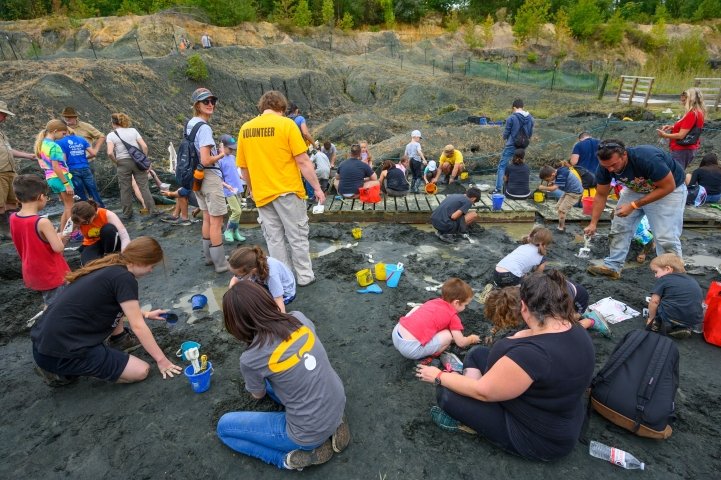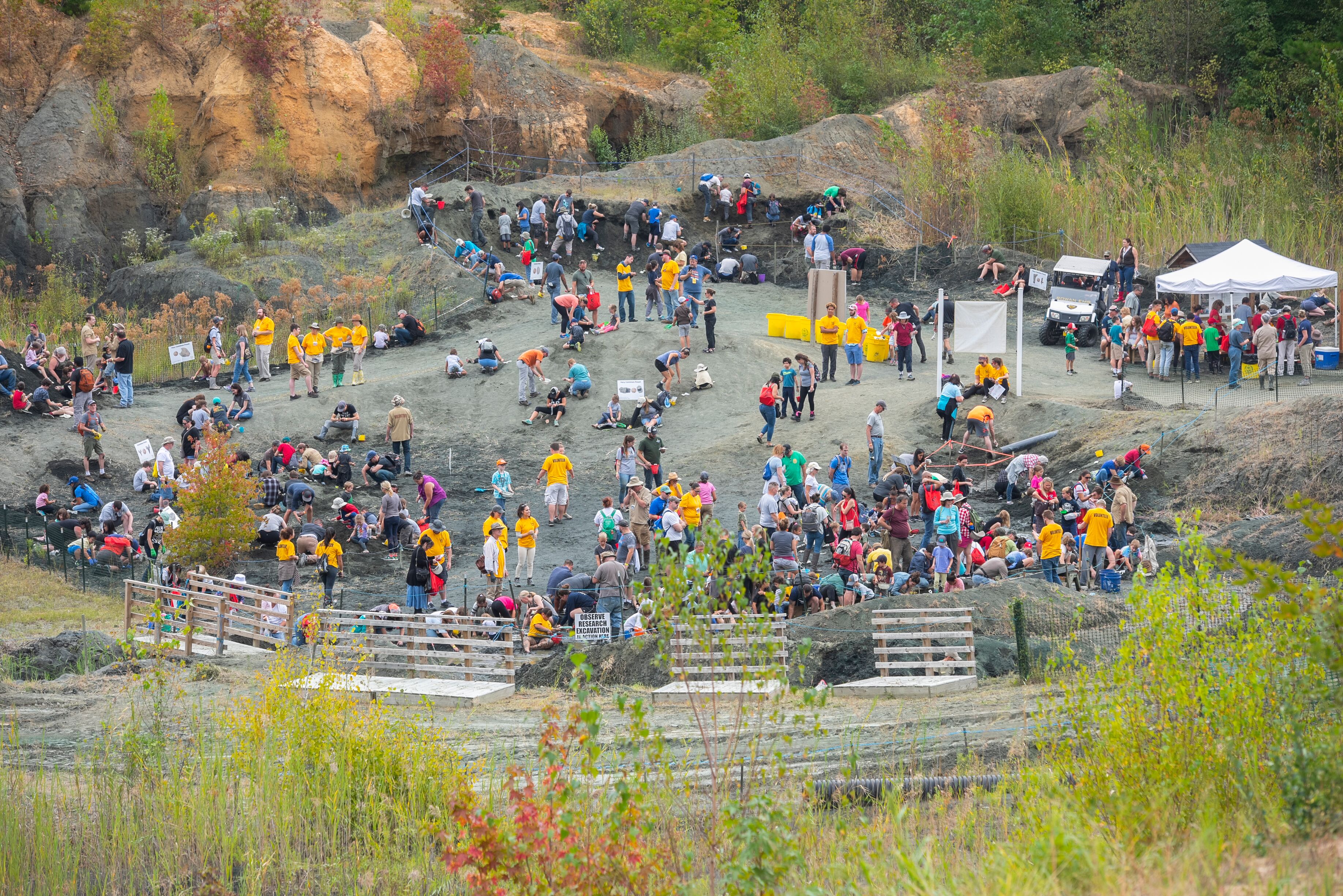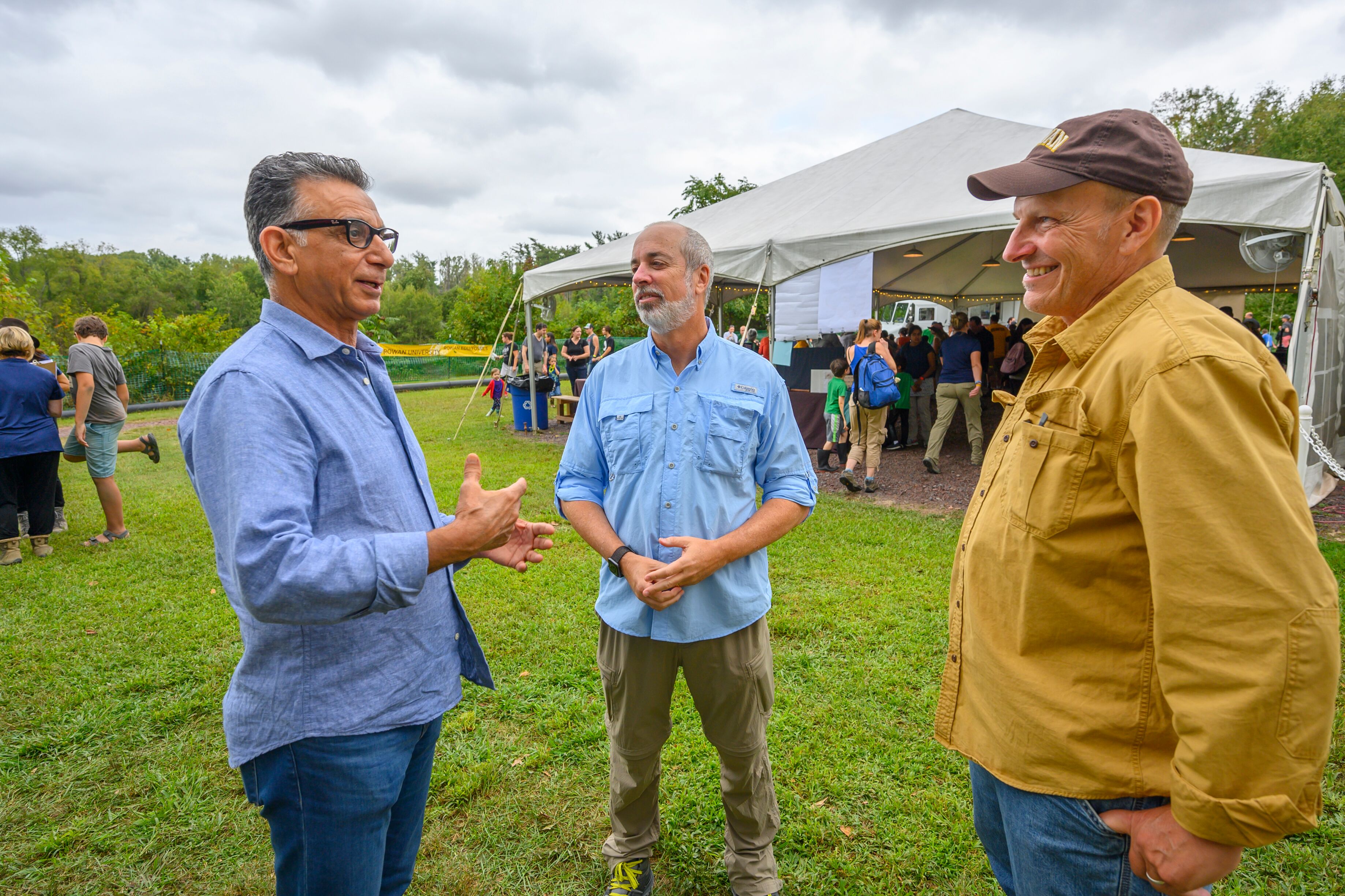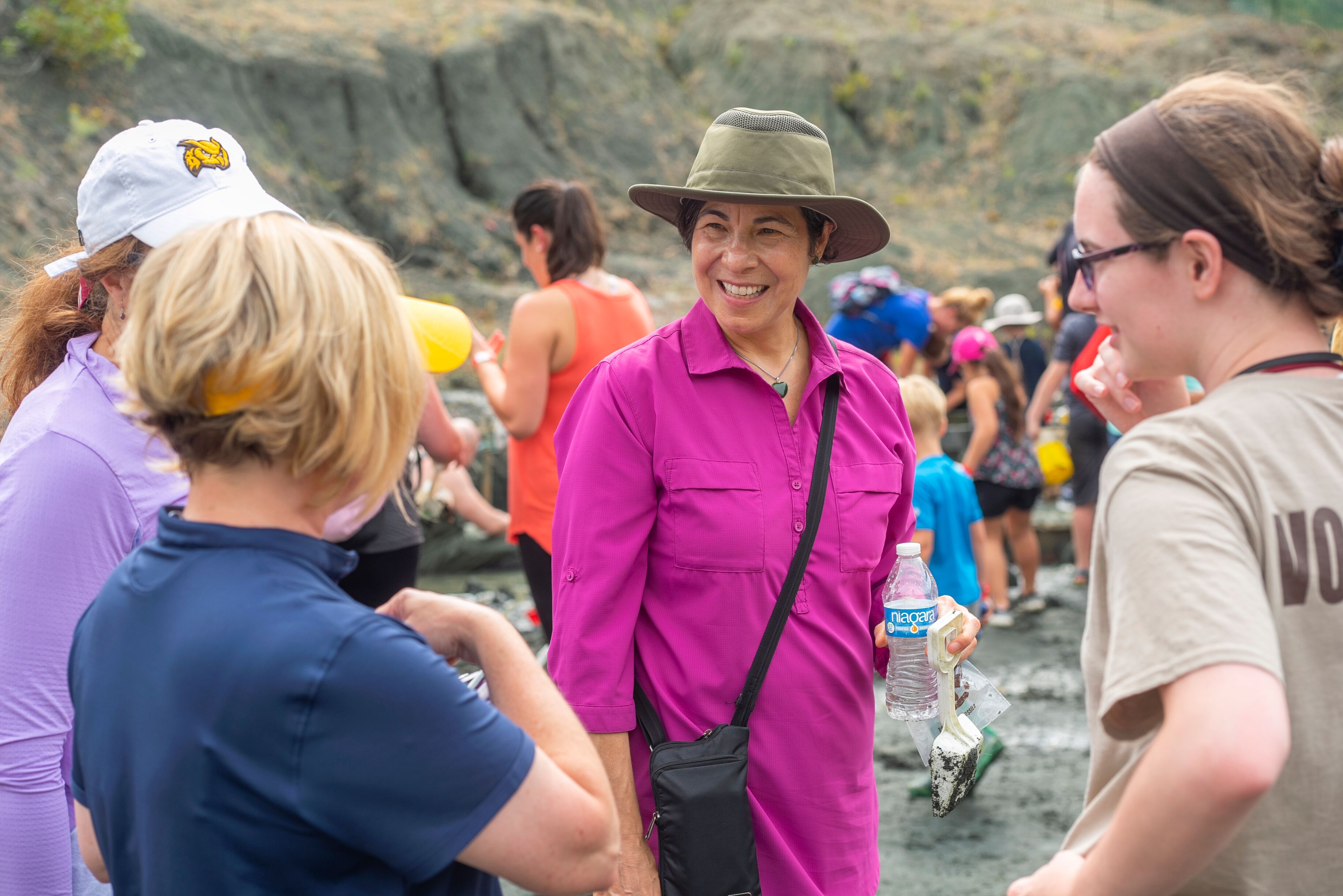Community Dig Day: 66 million years, plus eight; Dean Lacovara honored
Community Dig Day: 66 million years, plus eight; Dean Lacovara honored

Some 66 million years ago, an asteroid seven to 50 miles across blasted through Earth’s atmosphere and struck off Mexico’s Yucatán Peninsula, ending the Cretaceous period and killing an estimated 75 percent of life on Earth.
On Sept. 14, descendants of some species that weren’t destroyed crawled back into the mud to search for some that were during Rowan University’s eighth annual Community Dig Day.
The event, held each September at the Jean & Ric Edelman Fossil Park at Rowan University in Mantua Township, drew upward of 2,000 visitors who, armed with buckets and shovels, sifted mounds of wet, prehistoric earth for ancient treasures.
“It’s a really unique experience,” said Kelly Angelo of Mantua who attended with her husband, Charles, and children Sadie, 6, and Garrett, 10.
In the floor of the quarry, Sadie and Garrett unearthed fossilized pieces of sponge, shell and mineral matter, and bagged them for souvenirs.
“We think Sadie’s more artistic but Garrett seems to really enjoy science so we’re trying to steer him more towards it,” Charles Angelo said.
 In 2015, Rowan bought the 65-acre site, a longtime marl quarry, where, for the better part of a century, workers unearthed fossils as they dug for the lime-rich green sand material for use as fertilizer.
In 2015, Rowan bought the 65-acre site, a longtime marl quarry, where, for the better part of a century, workers unearthed fossils as they dug for the lime-rich green sand material for use as fertilizer.
Since purchasing the site, Rowan researchers have recovered thousands of fossils, all of them from ancient sea creatures, including the teeth of sand, crow and mackerel sharks, invertebrates like clams, snails and oysters, sea turtles and marine crocodiles.
In a large tent overlooking the dig site, faculty from the School of Earth & Environment displayed some of the park’s most significant discoveries to date, including the remains of a young, eight-foot long crocodile and a two-foot wide turtle shell.
“This is an important specimen because we found so much of it,” explained adjunct professor Francesca Mundrick of the sea turtle. “Often, we find just pieces, but in this case we found almost the whole thing.”
Coming soon: a “world-class” museum
Rowan alumni Jean and Ric Edelman endowed the site in 2016 with a $25 million gift and plans are now underway to design a museum and research facility to anchor it.
Fossil Park Director Dr. Kenneth Lacovara, who is also founding dean of the School of Earth & Environment, said designs for the museum by New York City-based architecture firm Ennead are expected to be released this fall.
“It’s going to be a world-class museum, drawing people from all over the world,” said Lacovara (below on right with Dr. Houshmand and Ric Edelman, center) .
.
The discoverer of Dreadnoughtus schrani, the largest fossilized dinosaur ever unearthed, Lacovara said he still gets excited when he, his staff, students or visitors find individual fossils, but he’s largely focused on a broader study at the park related to the asteroid strike that killed off the dinosaurs.
“There’s a hypothesis we’re testing between the fossils we’re finding here and the cataclysm off the coast of Mexico 66 million years ago,” he said.
Widely published, Lacovara expects to submit that study for publication this fall.
Explorers Club Medal celebration
On March 16, Lacovara received the Explorers Club Medal during the 115th Explorers Club Annual Dinner in Manhattan.
The world-renowned, New York-based club recognizes “extraordinary contributions directly in the field of exploration, scientific research, or to the welfare of humanity” and its eponymous Explorers Club Medal is the greatest honor it bestows. Previous honorees include the late mountaineer Sir Edmund P. Hillary (1986), filmmaker James Cameron (2013) and astrophysicist Neil deGrasse Tyson (2015).
Following Community Dig Day 2019, Rowan hosted a celebration for Lacovara at the site in recognition of his achievement.
“It’s really an accomplishment and, with it, he’s brought tremendous prestige to the University,” said Rowan President Ali A. Houshmand. “What we’re doing here, what Ric and Jean are doing, it’s just an amazing thing. Congratulations!”
Taking the long view, Jean Edelman (center, below, with fossil hunters) marveled at the “ripple  effect” that started with the mass extinction event that ended the dinosaurs’ rule but that resulted in humankind and all it has accomplished, including the study of Earth’s ancient past.
effect” that started with the mass extinction event that ended the dinosaurs’ rule but that resulted in humankind and all it has accomplished, including the study of Earth’s ancient past.
“So the dinosaurs went extinct and here we are today,” said Edelman. “And the reward is in the children who were here today, in seeing their smiles. The fact that we could give such a gift is humbling and we’re just very proud, and very grateful.”